
Nov. 13, 2009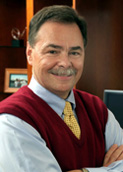 Fred Sanfilippo, MD, PhD |
|||
|
Whitehead donates $30 million for pediatric research Lawley named chair-elect of AAMC Nursing receives $8.1 million Gates grant
|
|||
It was a pleasure to see so many of you in attendance for our recent Future Makers lecture featuring Dr. Darrell Kirch, president and CEO of the Association of American Medical Colleges (AAMC). (If you were unable to join us, please view Dr. Kirch's engaging and thought-provoking presentation, "Health Care Reform: From Platitudes to Politics" online.)
Dr. Kirch reiterated the critical importance of some of the initiatives currently under way within the Woodruff Health Sciences Center, such as funds flow alignment and culture transformation, but he also introduced a potential opportunity for academic health centers like ours that you may not be familiar with yet—the concept of health innovation zones (HIZs).
The idea, for which Dr. Kirch and other leaders of academic medicine have generated considerable legislative support, has been introduced as legislation (H.R. 3664) by Rep. Allyson Schwartz of Pennsylvania. HIZs harness the expertise of academic health centers in research and clinical care to explore payment models that improve delivery and reduce cost and at the same time meet the health care needs of the community more effectively.
An HIZ is a region that contains both an academic health center and other clinical and non-clinical entities that provide a full complement of coordinated health care services—much like Atlanta. In the HIZ model, these groups would collaborate to restructure payment and to coordinate more efficient delivery of health care services. If HIZ legislation is approved, it will make the zones exempt from specific regulations, enabling them to reduce costs through increased provider collaboration and integration.
As you can imagine, this is an opportunity where Emory's Woodruff Health Sciences Center has the potential to pioneer truly transformative change in our broken health care delivery system. As the test bed for medical innovation within not only Atlanta but also the entire region, becoming an HIZ would allow us to develop, test, and refine innovative delivery and payment methods and to leverage our already strong relationships with our academic and clinical partners to make significant strides toward transforming health and healing … together.
Please share your thoughts and feedback at evphafeedback@emory.edu.
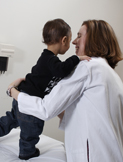 Children are expected to be the chief beneficiaries of the new grant.
Children are expected to be the chief beneficiaries of the new grant.Whitehead donates $30 million to Children's Healthcare for pediatric research with Emory
The Joseph P. Whitehead Foundation, a charity that benefits children and youth in metro Atlanta, has donated $30 million to Children's Healthcare of Atlanta, including $25 million to help fund a new shared research building located on the Emory campus and $5 million to support the Marcus Autism Center.
The grant will help expand the growing research partnership between Emory and Children's. Some of the pediatric research expected to be conducted in the new building will focus on heart disease, cancer, vaccines, and new drug discoveries. The building also will serve as a recruiting tool to attract top investigators from around the world. Read more.
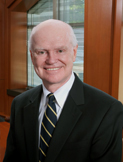 Thomas Lawley
Thomas Lawley
Lawley named chair-elect of AAMC
Medical dean Thomas Lawley has been named chair-elect of the Association of American Medical Colleges (AAMC). Lawley's one-year-term will begin next year, when he succeeds newly elected chair Deborah Powell, AVP for new medical education programs and dean emeritus of the University of Minnesota Medical School.
The AAMC represents all 131 accredited U.S. and 17 accredited Canadian medical schools; approximately 400 major teaching hospitals and health systems, including 68 VA medical centers; and nearly 90 academic and scientific societies—or an aggregate of some 125,000 faculty members, 75,000 medical students, and 106,000 resident physicians.
Lawley has served as dean since 1996. Since then, NIH-sponsored research funding to the medical school has increased nearly five-fold to more than $265 million per year, ranking Emory 15 among U.S. medical schools. Under his leadership, strategic plans for research and teaching have been implemented and a new curriculum has been created. Read more.
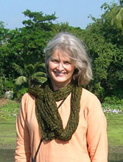 Lynn Sibley
Lynn Sibley
Nursing receives $8.1 million Gates grant
The nursing school has received $8,163,298 from the Bill and Melinda Gates Foundation for a 2.5-year project designed to improve maternal and newborn survival rates in rural Ethiopia.
Led by principal investigator Lynn Sibley (nursing and public health) and an associated faculty member in anthropology, the grant will enable a team of Emory faculty and graduate students to create a community-oriented strategy, in collaboration with the Ethiopian Ministry of Health, to improve maternal and newborn health in rural Ethiopia and position the approach to be adopted throughout the country.
Emory will also collaborate with regional health bureaus, the John Snow Research and Training Institute, the University Research Corporation, and two regional Ethiopian universities. The collaborators will work to improve the capability and performance of frontline health care workers, including volunteers and traditional birth attendants, in providing targeted maternal and newborn services around the time of birth. They also will work to increase the demand for those services and promote healthy self-care behaviors. Read more about this grant. Read more about Sibley's previous work to make childbirth safer in the developing world.
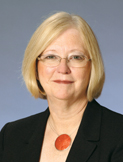 Marsha Lewis
Marsha Lewis
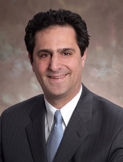 Doug Ander
Doug Ander
The stroke patient had a terrible night. He was fatigued from lack of sleep and had a fever and rash. After four weeks in the hospital and two weeks in rehab, he was about to be discharged. But the thought of returning home frightened and depressed him. What if he had another stroke? His wife was worried about caring for him at home on her own.
To make matters worse, his care team was out of sync that morning. The discharge planner talked too fast. The doctor was in a hurry. The nursing student who knew about the patient’s fatigue, fever, and rash failed to speak up about his condition.
Fortunately, the patient and his wife and care team were health sciences students acting out a scenario to learn the importance of communicating as a team. Talk about teamwork—the scenario played out simultaneously among 45 groups of 10 students each, representing medicine, nursing, physician assistant, physical therapy, and medical imaging during the WHSC's first interprofessional communications class held in mid-October. More than 80 faculty members from each discipline worked in pairs to lead the student groups.
The class is an extension of the Interprofessional Team Training Day launched by the schools of nursing and medicine in 2008. In that class, more than 200 senior nursing and third-year medical students work in teams to run an emergency code on patient mannequins in the medical and nursing schools. The class, held for the second time in early 2009, has proved successful.
"Students told us they wanted more opportunities to learn together earlier in their education," says Marsha Lewis, associate dean for education in the nursing school. As a result, nursing and medical faculty developed the interprofessional communication class for first-year students from both schools. To better represent hospital teams, the class also included the allied health professions and master's-level nursing students.
"This is the next generation of team training," says emergency medicine physician Doug Ander, who directs the Emory Center for Experiential Learning in the medical school. "Our hope is to continue training students in their second year so they can learn more about the fundamentals of working together as a health care team."
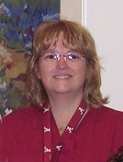 Susan Horner
Susan Horner
Bio stats:
• NICU nurse, EUHM, since 1987
• Diploma, nursing, CLH School of Nursing, 1987
• Nursing assistant, CLH
Contact:
susan.horner@emory
healthcare.org
One in a series of profiles of people in the Woodruff Health Sciences Center
In 1983, Susan Horner literally moved into Crawford Long Hospital. The Alabama teenager wanted to be a nurse, like "Aunt Kathryn" (the hospital's then director of nursing Kathryn Pope, a close friend of Horner's family). Horner entered the hospital's three-year nursing school and moved into a dorm in the West Peachtree building that was torn down last year.
Before entering nursing school, Horner had worked as a nursing assistant in the hospital's nursery. She loved the babies, and the nurses there loved her. They asked her to keep working with them while she finished school. She has been working with newborns ever since, and is now in the neonatal intensive care unit (NICU).
While Horner's love of babies hasn't changed over her 25-plus years at what is now Emory University Hospital Midtown, nursing certainly has. A new emphasis on family-centered care, for example, has extended clinical focus beyond just the newborn. Horner often follows babies from admission to discharge, making sure the family is involved in every step of care, from feedings and administering medications to learning CPR, a requirement for family members of premature infants before these babies can be discharged.
Another big change has been the expectation that nurses will provide extensive input on the babies and families under their care. Horner participates in rounds, providing essential details to physicians and other team members about what she believes is happening with a baby and/or family.
Horner is part of the NICU's "PICC" team, whose members are trained to place and maintain peripherally inserted central catheters for administering IV fluids, nutrients, and medications. Such catheters can stay in place for weeks or months and are life-savers, but they can also be a source of infection without enforcement of a rigorous regimen for protocol and accountability. The NICU PICC team recently received a statewide award for quality and safety (see article below), and Horner is proud to contribute to a team effort that is continually in search of ways to hone process and improve care.
Horner hasn't lived on the Midtown campus for more than two decades now, but she still thinks of it as home and her co-workers as extended family—"all of us working together," she says, "to assure the best outcome possible for our families."
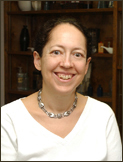 Barbara Stoll
Barbara Stoll• Stoll elected to Institute of Medicine
Last month, the Institute of Medicine elected Barbara Stoll to its newest class of 65 top national health scientists, bringing Emory's IOM list of members to 26. As pediatrics chair in the medical school and CEO of the Emory-Children's Center, Stoll plays a pivotal leadership role in the collaboration between Emory and Children's Healthcare of Atlanta. Her research has focused on low birthweight and premature newborns and epidemiology and global impact of neonatal infections. She is principal investigator for the medical school's participation in the multi-million dollar National Children's Study. Read more.
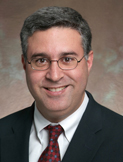 Fadlo Khuri is a 2003 fellow of the Woodruff Leadership Academy.
Fadlo Khuri is a 2003 fellow of the Woodruff Leadership Academy.• Khuri named deputy director of Winship
Fadlo Khuri, chair of hematology/oncology in the medical school, has been named deputy director of the Winship Cancer Institute. Khuri, who is Goizueta Distinguished Chair for Cancer Research, also directs Winship's Discovery and Developmental Therapeutics scientific program. His research interests include development of approaches to improve standard of care for tobacco-related cancers, and his team is investigating how to inhibit cell signal transduction in lung and head/neck cancers. Read more.
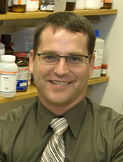 Gary Miller is a 2005 fellow of the Woodruff Leadership Academy.
Gary Miller is a 2005 fellow of the Woodruff Leadership Academy.
• Miller named associate dean for research in public health
Gary Miller (environmental and occupational health) has been appointed associate dean for research in the Rollins School of Public Health. Miller will provide leadership for transition and expansion of laboratory-based research in the school's new Claudia Nance Rollins building, which opens next fall. Miller, who holds a joint appointment in neurology in the medical school, chairs Emory's Institutional Health and Biosafety Committee. His research focuses on environmental causes of Parkinson's disease.
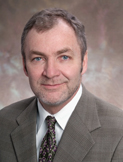 Walter Curran
Walter Curran• Winship receives $4.7 million donation
Last month, the Winship Cancer Institute received $4.7 million from an anonymous donor. According to Walter Curran, Winship director, the gift will serve as a fund from which institutional research grants will be distributed in five priority areas: (1) recruitment of faculty researchers, (2) seed grants for research projects, (3) investigator-initiated clinical trials, (4) development of Winship's survivorship program, and (5) mentoring opportunities for young clinicians and investigators. Read more.
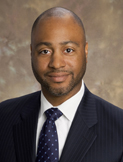 F. Kennard Hood
F. Kennard Hood
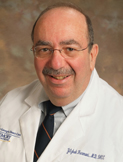 Yitzhak Hermoni
Yitzhak Hermoni
• Emory Healthcare expands services in two metro areas
Last month, Emory Healthcare announced expansion of services in two metro areas, one north and one south of Atlanta: (1) the opening of Emory at Eagles Landing to serve the primary care needs of residents of Henry County and (2) the merging of Georgia-Heart Care in Forsyth County into Emory Specialty Associates, a subsidiary of Emory Healthcare.
Emory medical school and residency alumnus F. Kennard Hood is providing family practice services at Eagles Landing, located at 830 Eagles Landing Parkway in Stockbridge. He holds weekday and Saturday hours and provides expertise in areas including adolescent medicine, asthma, diabetes, hypertension, osteoporosis, sports injuries, stress, testing, and women's health, among others. He also provides echocardiography and ultrasonography services. Read more.
Cardiologist Yitzhak Hermoni has practiced his specialty in Cumming since 1991 and founded Georgia Heart Care in 1997. The newly renamed Emory-Georgia Heart Care is located at 1200 Bald Ridge Marina Road in Cumming. Hermoni is a graduate of Hebrew University in Israel, trained at Johns Hopkins and University of Cincinnati, and is a fellow of the American College of Cardiology. He will continue to use existing area hospitals as well as Emory University Hospital and EUH Midtown for tertiary care unavailable locally. Read more.

Valerie Croft
• Neonatal PICC team recognized for quality/safety
The nursing team in charge of the delicate art of inserting and maintaining central line catheters in fragile newborns in intensive care at Emory University Hospital Midtown won first place statewide recognition from the Georgia Hospital Association for infection prevention and control (Josh Nahum category). This is one of several awards the GHA's Partnership for Health and Accountability gives each year to recognize Georgia hospitals for best practices in quality and safety.
The "PICC" team (peripherally inserted central catheters) cut infection rates in half during the first six months of implementation of a "bundle" of standardized practices that they developed. The PICC team has 10 members, but team leader Valerie Croft says that their success depends on the support they receive from all the 70 staff nurses in the neonatal ICU. "We have the whole unit behind us," she says.
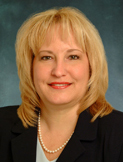 Dee Cantrell
Dee Cantrell
• Cantrell named CIO of the Year
Dee Cantrell, Emory Healthcare chief information officer, has been named CIO of the Year by the Georgia CIO Leadership Association, an award honoring technology executives who have shown excellence in managing enterprise-wide information systems in Georgia. Read more.
To learn more about Cantrell's role and responsibilities in Emory Healthcare, read a profile in Health Sciences Update. For Cantrell's thoughts about electronic patient record systems, read "Beyond Diagnosis: The Technological Revolution in Healthcare Administration and Patient Care" in the Sept. 16 issue of the Goizueta Business School's online business journal, Knowledge@Emory.
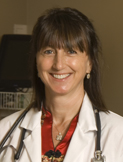 Susan Bauer-Wu
Susan Bauer-Wu
• Bauer-Wu is new Academy of Nursing fellow
Georgia Cancer Coalition scholar Susan Bauer-Wu (nursing school and Winship Cancer Institute) has been inducted as a fellow in the Academy of Nursing. A leader in palliative and integrative medicine, she is currently conducting a large NIH-funded clinical trial analyzing whether meditation affects subjective symptoms as well as objective findings such as level of stress hormones and time required for recovery of white blood cells following bone marrow transplant. Read more. Bauer-Wu is also principal investigator of a $3.5 million NIH program project grant focused on reducing risk of heart disease and improving health and well-being among family caregivers of dementia and heart failure patients. Read more.
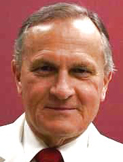 Lamar McGinnis
Lamar McGinnis
• McGinnis leads American College of Surgeons
Lamar McGinnis, longtime clinical professor of surgery and senior adviser to the American Cancer Society, was sworn in for a yearlong term as president of the American College of Surgeons (ACS) at the organization's annual meeting last month. McGinnis has provided service to the ACS for more than four decades. Read more.
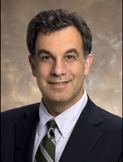 Joel Saltz
Joel Saltz
• Emory selected as "in silico" research center
Through the Center for Comprehensive Informatics (CCI), Emory has been selected as one of five "in silico" research centers of excellence to support the National Cancer Institute's Center for Biomedical Informatics and Information Technology. The new center is directed by Georgia Research Alliance Eminent Scholar Joel Saltz, who also leads the Emory CCI, with Daniel Brat (pathology) serving as principal investigator. The goal of the new program is to leverage rich data sets that are already in place (in silico) and available to the cancer community to develop more effective cancer treatments. Read more.

• For scientists, Emory ranked fifth best place to work
The Scientist magazine readers ranked Emory the fifth best place to work in academia in the United States, based on a survey of more than 2,350 life scientists in academic, hospital, government, or research organizations. The group represented 94 U.S. institutions and 25 institutions in other countries. Read more.

• Online archive preserves history of victory over smallpox
The Global Health Chronicles, an online archive hosted by Emory University Libraries, launched publicly on Oct. 26, the 30th anniversary of worldwide eradication of smallpox. In addition to historic video and audio interviews, photos, presentations, and government papers, the archive includes oral histories of epidemiologists who worked in 22 African countries as well as India, Bangladesh, and Nepal; digitized books on the history of smallpox eradication; and seminars by leaders of the effort. Read more. View a short how-to video on ways to use this archive.
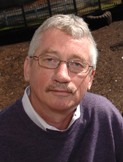 Frans de Waal
Frans de Waal
• Primate research inspires modern-day Macbeth
A new play, Hominid, based on actual events in a chimpanzee colony as documented by Yerkes primatologist Frans de Waal, is being presented Nov. 12-22 in the Munroe Theater at Emory's Dobbs University Center. Events in the play, including murder and suicide, are drawn from de Waal's first book, Chimpanzee Politics. For ticket information, contact arts.emory.edu or 404-727-5050. Read more.
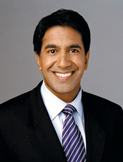 Sanjay Gupta
Sanjay Gupta
• Cheating Death book-signing
You are invited to hear Sanjay Gupta discuss his latest book, Cheating Death: The Doctors and Medical Miracles That Are Saving Lives Against All Odds, on Nov. 18, 6 to 8 p.m. The program will be in the WHSCAB auditorium, with a reception and book-signing to follow. Read an excerpt.
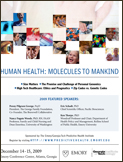
• Fifth annual predictive health symposium
The fifth annual Emory/Georgia Tech Symposium on Predictive Health will take place at the Emory Conference Center, Dec. 14-15. The theme is "Human Health: Molecules to Mankind." In addition to speakers from Emory and Georgia Tech, the roster includes presenters from CDC, University of Washington, the Bravewell Collaborative, University of Michigan, biotech start-up Pacific Biosciences, and National Jewish Health. For more details about the program or to register, go to website.

• Save the date for State of the WHSC address
Please mark your calendar for the State of the Woodruff Health Sciences Center address on Mon., Feb., 22, at 4:30 p.m. in the WHSCAB auditorium. More information to follow.
 Inger Hansen directs the diabetes service at Emory-Children's Center.
Inger Hansen directs the diabetes service at Emory-Children's Center.
• Thanks to those who supported diabetes walk
Congratulations to the Emory team of walkers who raised more than $6,500 in the Oct. 17 walk on behalf of the Juvenile Diabetes Research Foundation—and thanks to all the donors! The top three Emory fund-raising teams and their captains represented the following areas: transplant (Meg Jeffrey), Emory-Children's Center (Aretha Samuels), and nursing school (Maeve Howett). Special thanks also to event coordinator Traci Galatas (traci.galatas@emoryhealthcare.org or 404-778-3701) in Emory Healthcare's managed care office.
